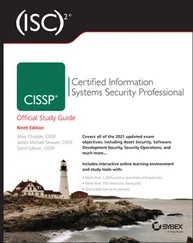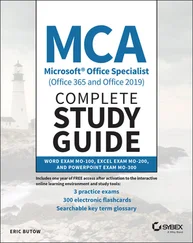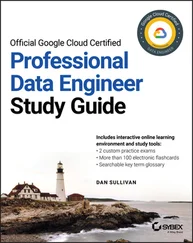1 ...7 8 9 11 12 13 ...22
Understanding Storage Requirements
There are even more options when it comes to storage. There are several factors to consider when choosing a storage option, including how the data is structured, how it will be accessed and updated, and for how long it will be stored.
Let's look at how you might decide which data storage service to use given a set of requirements. Structured data fits well with both relational and NoSQL databases. If SQL is required, then your choices are Cloud SQL, Spanner, BigQuery, or running a relational database yourself in Compute Engine. If you require a global, strongly consistent transactional data store, then Spanner is the best choice, while Cloud SQL is a good choice for regional-scale databases. If the application using the database requires a flexible schema, then you should consider NoSQL options. Cloud Firestore is a good option when a document store is needed, while Bigtable is well suited for ingesting large volumes of data at low latency.
Of course, you could run a NoSQL database in Compute Engine. If a service needs to ingest time-series data at low latency and one of the business requirements is to maximize the use of managed services, then Bigtable should be used. If there is no requirement to use managed services, you might consider deploying Cassandra to a cluster in Compute Engine. This would be a better choice, for example, if you are planning a lift-and-shift migration to the cloud and are currently running Cassandra in an on-premises data center.
When long-term archival storage is required, then Cloud Storage is the best option. Since Cloud Storage has several classes to choose from, you will have to consider access patterns and reliability requirements when choosing a storage class. If the data is frequently accessed, Standard Storage class storage is appropriate. If high availability of access to the data is a concern or if data will be accessed from different areas of the world, you should consider multiregional or dual-region storage. If data will be infrequently accessed, then Nearline, Coldline, or Archive storage is a good choice. Nearline storage is designed for data that won't be accessed more than once a month and will be stored at least 30 days. Coldline storage is used for data that is stored at least 90 days and accessed no more than once every three months. Archive storage is well suited for data that will be accessed not more than once a year. Nearline, Coldline, and Archive storage have slightly lower availability than Standard Storage.
Understanding Network Requirements
Networking topics that require an architect tend to fall into two categories: structuring virtual private clouds and supporting hybrid cloud computing.
Virtual private clouds (VPCs) isolate a Google Cloud Platform customer's resource. Architects should know how to configure VPCs to meet requirements about who can access specific resources, the kinds of traffic allowed in or out of the network, and communications between VPCs. To develop solutions to these high-level requirements, architects need to understand basic networking components such as the following:
Firewalls and firewall rules
Domain name services (DNS)
CIDR blocks and IP addressing
Autogenerated and custom subnets
VPC peering
Many companies and organizations adopting cloud computing also have their own data centers. Architects need to understand options for networking between on-premises data centers and the Google Cloud Platform network. Options include using a virtual private network (VPN), Dedicated Interconnect, and Partner Interconnects.
Virtual private networks are a good choice when bandwidth demands are not high and data is allowed to traverse the public Internet.
Dedicated Interconnects are used when a 10 Gbps connection is needed and both your on-premises point of presence and a Google point of presence are in the same physical location.
If you do not have point of presence co-located with a Google point of presence, a Partner Interconnect can be used. In that case, you would provision a connection between your point-of-presence location and a Google point of presence using the telecommunications partner's equipment.
Nonfunctional Requirements
Nonfunctional requirements often follow from business requirements. They include the following:
Availability
Reliability
Scalability
Durability
Observability
Availability is a measure of the time that services are functioning correctly and accessible to users. Availability requirements are typically stated in terms of percent of time a service should be up and running, such as 99.99 percent. Fully supported Google Cloud services have SLAs for availability so that you can use them to help guide your architectural decisions. Note, alpha and beta products typically do not have SLAs.
Reliability is a closely related concept to availability. Reliability is a measure of the probability that a service will continue to function under some load for a period of time. The level of reliability that a service can achieve is highly dependent on the availability of infrastructure upon which it depends.
Scalability is the ability of a service to adapt its infrastructure to the load on the system. When load decreases, some resources may be shut down. When load increases, resources can be added. Autoscalers and managed instance groups are often used to ensure scalability when using Compute Engine. One of the advantages of services like Cloud Storage and App Engine is that scalability is managed by GCP, which reduces the operational overhead on DevOps teams.
Durability is used to measure the likelihood that a stored object will be retrievable in the future. Cloud Storage has 99.999999999 percent (eleven 9s) durability guarantees, which means it is extremely unlikely that you will lose an object stored in Cloud Storage. Because of the math, as the number of objects increases, the likelihood that one of them is lost will increase.
Observability is the ability to determine the internal state of a system by examining outputs of the system. Metrics and logs improve observability by providing information about the state of a system over time.
The Google Cloud Professional Cloud Architect exam tests your ability to understand both business requirements and technical requirements, which is reasonable since those skills are required to function as a cloud architect. Security is another common type of nonfunctional requirement, but that domain is large enough and complex enough to call for an entire chapter. See Chapter 7, “Designing for Security and Legal Compliance.”
The Google Cloud Professional Cloud Architect certification exam uses case studies as the basis for some questions on the exam. Become familiar with the case studies before the exam to save time while taking the test.
Each case study includes a company overview, solution concept, description of existing technical environment, business requirements, and an executive statement. As you read each case study, be sure that you understand the driving business considerations and the solution concept. These provide constraints on the possible solutions.
When existing infrastructure is described, think of what GCP services could be used as a replacement if needed. For example, Cloud SQL can be used to replace an on-premises MySQL server, Cloud Dataproc can replace self-managed Spark and Hadoop clusters, and Cloud Pub/Sub can be used instead of RabbitMQ.
Read for the technical implications of the business statements—they may not be stated explicitly. Business statements may imply additional requirements that the architect needs to identify without being explicitly told of a requirement.
Читать дальше












